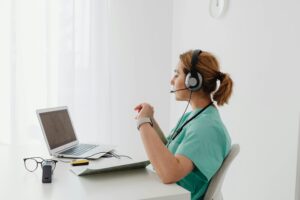The dream of becoming a physician dies for many young people with disabilities when they check the admissions requirements of most medical schools the world over. However, researchers are often found quoting the merits of inclusion of physicians with disabilities, especially with regard to activating advanced understanding, boosting empathy, shunning stereotypes of people with disabilities, facilitating communication, and spurring technological advances for improved care. However, at Windsor University School of Medicine, we celebrate the experiences and perspectives that people of all backgrounds, including those with disabilities, bring to classrooms, labs and clinics. We encourage all aspiring medical students to shift their lens from “living with a disability” to “thriving with a disability”.
Many Medical schools receive applications from the brightest of students with physical disabilities ranging from hearing or mobility impairments, learning disabilities such as dyslexia, ADHD, autism or depression, to chronic illnesses such as diabetes and auto-immune diseases. Medical schools need to broaden their horizon and focus on what these students can do, rather than dwell on what they cannot do. This is because these students further diversify the health care profession and improve our ability to care for an expanding population of patients with disabilities.
On this International Day of Persons with Disabilities, here are some tips to help medical schools accommodate individuals with abilities, if they are otherwise qualified for admission.
-
Changes to practice or policy
For instance, a student with a debilitating learning disability, such as ADHD or Autism, may have difficulty sustaining attention and may take longer to read and comprehend the exam or assessment questions. Medical schools can help such a disabled person by providing them with extra time to complete an assessment. In fact, as a proof of inclusion, medical schools can forgo the time limit entirely. For instance, Yale School of Medicine keeps all exams in pre-clerkship years untimed and given over a several-day window, choosing to focus on knowledge and acquired skills rather than time.
-
Changes to the physical environment
Medical schools can also remove physical barriers by installing a ramp as well as steps so that students with mobility impairments can access a lecture theatre. Not to mention, install elevators throughout the building so students with physical impairments can access all floors easily. Another example of this is alleviating a resident from weeks of night call to taking once weekly call from 5 PM until 10 PM. In this way, the resident would compete approximately the same number of hours as his peers, but in a modified schedule.
-
Providing additional equipment
An example of this would be providing an electronic stethoscope so that a student with a hearing impairment is able to listen for heart sounds.
-
Providing Support
Medical schools should put students with disabilities in touch with current and former students who have a disability so they can learn from their experiences.
-
Presenting material in multiple formats
Instead of administering lectures, medical schools can incorporate video-based learning, hands-on learning, small groups, and lectures, to help students with learning disabilities who are known to benefit from varied approaches.







